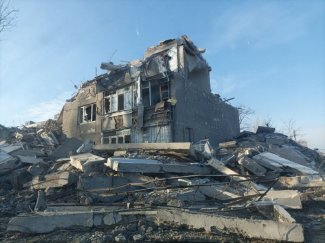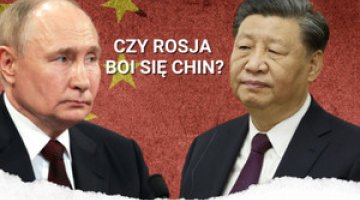Russia announces expansion of military capabilities. 302nd day of the war

On 21 December, the Russian Defence Ministry College’s annual extended meeting was held with President Vladimir Putin’s participation. The main topic was the so-called special military operation, which is to continue ‘until the tasks are fully performed’. Putin drew attention to the need to modernise the mobilisation system. Defence Minister Sergei Shoigu said that the hostilities, which have so far involved 250,000 troops, have revealed problems in communications, automated command and control systems, and counter-battery warfare. The war has forced a reorientation of armaments and military equipment procurement. Production of the basic types of armaments used by the Russians in Ukraine was planned to be increased by 30 per cent in 2022, while artillery ammunition, missiles, and airborne means of destruction – by 69–109 per cent (depending on the types). Despite this, the plan for so-called state defence procurements was fulfilled by 91% this year. The deliveries of the necessary categories of armaments and military equipment for operations, announced for 2024–5, have been accelerated and are to be completed in 2023. The Russian army is to maintain engagement in Syria and Nagorno-Karabakh. The ‘Zapad 2023’ exercise are also planned.
Minister Shoigu announced the plans to increase the Russian army to 1.15 million soldiers in 2023 (up from 1 million at the beginning of this year) and 1.5 million in the coming years. The target number of contract soldiers is to reach 695,000 (with 521,000 by the end of 2023, an increase of 141,000). Conventional capabilities are also to be increased. The Western Military District is to be reorganised into two districts, Moscow and Leningrad, with a new army corps in Karelia. Five artillery divisions will be formed, including three mechanised divisions, two stationed in occupied parts of the Kherson and Zaporizhzhia oblasts, and two air assault divisions. In addition – based on existing brigades – seven mechanised divisions and five naval infantry divisions are to be formed. Three new aviation division commands will be created in the Air Force, eight bomber and one fighter aviation regiments, and six army aviation brigades. Combined arms army and tank army commands are to be assigned mixed aviation divisions and army aviation brigades (each to include 80–100 combat helicopters). New Russian Navy bases are to be established in Berdiansk and Mariupol. The age of conscripts is to be gradually raised – from 18–27 (currently) to 21–30.
On 23 December, the Ukrainian General Staff reported that Russian troops had crossed the border and attacked Ukrainian positions in Sumy Oblast (Vysoke, east of Krasnopillia), which they had not entered since the spring when they withdrew from northern Ukraine. In the Donetsk Oblast, the Russians renewed attacks south and north-east of Bakhmut, east and north of Siversk, west of Horlivka and north and west of Donetsk. There has been an increase in the intensity of Russian operations towards Kupiansk and Lyman, where the aggressor is attempting to push Ukrainians out of the Luhansk Oblast. Ukrainian troops have made further attempts to recapture the eastern part of Bakhmut and push back the enemy from the city while they are confining themselves to diversionary and reconnaissance operations in other directions.
The Russians continue rocket-air strikes and shell Ukrainian army positions and facilities along the line of contact and border areas. Kherson (the city was shelled 30 times on 22 December), Nikopol and the Ochakiv area remain the main targets. The Zaporizhzhia area, Kharkiv and Kharkiv Oblast energy facilities were affected by rocket attacks. Ukrainian artillery and aviation carried out spot attacks in the main combat areas. Acts of Ukrainian diversion occurred in Melitopol and Mariupol.
The Ministry of Defence of Ukraine presented another communiqué on Russian tactics concerning attacks on Ukrainian infrastructure. Missile strikes are preceded by kamikaze drone attacks, which are much cheaper (they have been described as ‘mopeds’) and draw the fire of Ukrainian air defences. As a result, the missiles needed to shoot down Russian cruise missiles are in short supply. With their A-50U radar reconnaissance aircraft, the Russians are also to keep a constant watch on the airspace situation over the entire Ukraine.
During President Volodymyr Zelensky’s visit to Washington on 21 December, the US confirmed the transfer of a new $1.85 billion military aid package to Kyiv. The Patriot air defence system battery is a significant part of this aid (for more details, see ‘The brotherhood of arms and values. Zelensky’s visit to Washington’). President Emmanuel Macron announced that in 2023 France would provide Ukraine with new armaments and ammunition. In doing so, he mentioned howitzers on the CAESAR vehicle chassis, which will fulfil the announcement of the transfer of 6–12 units ordered before the outbreak of war by Denmark.
On 19 December, Alyaksandr Lukashenka announced that Belarus had received Russia’s S-400 air defence and Iskander missile systems. Since then, however, information has yet to emerge detailing this report or confirming the presence of these systems in Belarusian army units.
For several weeks, Ukrainian Special Operations Forces have had a high level of activity in the occupied parts of Kherson and Zaporizhzhia oblasts. They primarily conduct reconnaissance of the locations of concentrations of Russian forces, which are then fired upon with HIMARS systems, and eliminate collaborators. Due to the intensity of Ukrainian sabotage activities, most of the collaborators from the Kherson Oblast have moved to the border area with Crimea, which is out of range of the HIMARS systems. For this reason, the centre of the collaborationist authorities of this region is currently Henichesk.
Commentary
- The plans put forward by Russia to expand its military capabilities should be seen as an expression of its determination to continue a war that Moscow sees as part of a clash with the West. The announcement to increase their army by half and the land potential by more than twice is intended to show that further military support for Ukraine will require the West to increase spending on armaments and military equipment significantly and at least partially switch to wartime economies. While Russia has the human and material potential and the production base to implement these intentions, the financial capacity and timeframe for implementing them remain an open question. Implementing the plan will further impoverish the Russian state and society.
- A significant constraint on implementing the plans is that Russia lacks an adequate number of adequately trained and non-commissioned officers. The newly-formed units – at least in the first period of their operation – will face a shortage of personnel, and command positions will be held by military officers with only officer courses at civilian universities. The Russian army will resemble the Soviet army, whose models it has tried to move away from over the past two decades. Nevertheless, under the conditions of the ongoing conflict, it will gain a significant advantage over the Ukrainian army, which also lacks – despite Western support – the ability to quickly train the necessary number of officers and non-commissioned officers, and remains entirely dependent on Western supplies for equipment and war materials. However, the Ukrainian army will be even more superior to the expanded Russian army in terms of morale.





